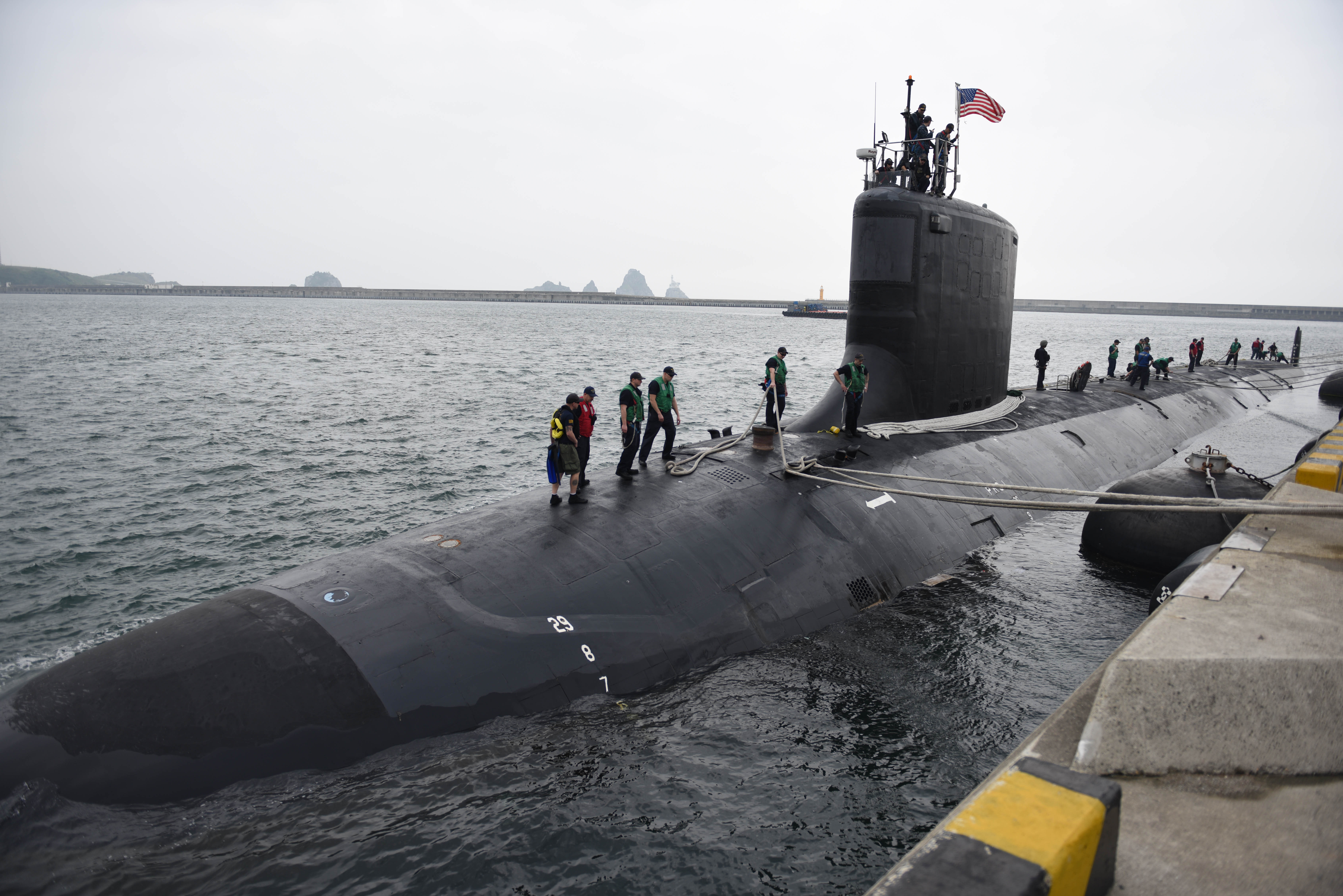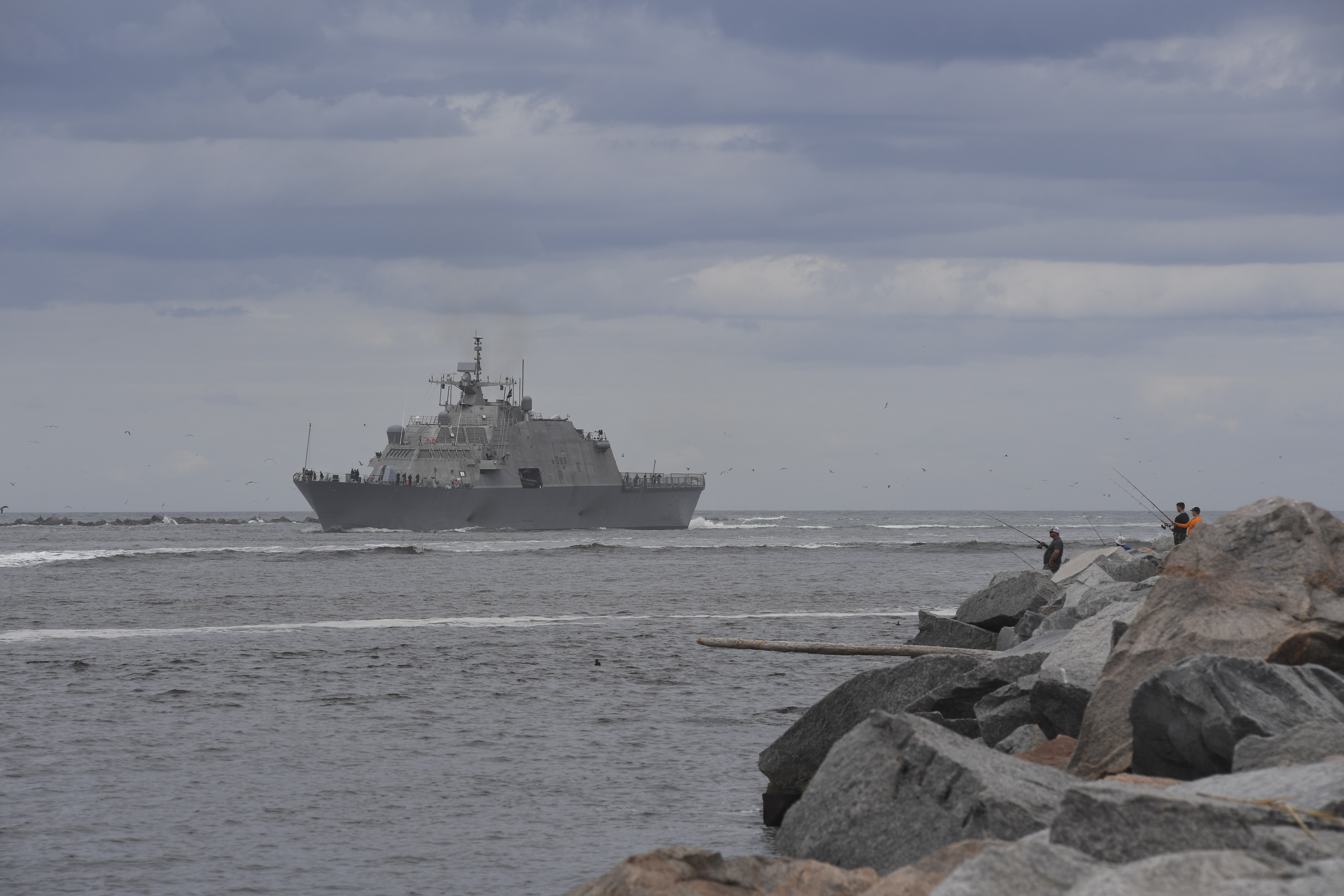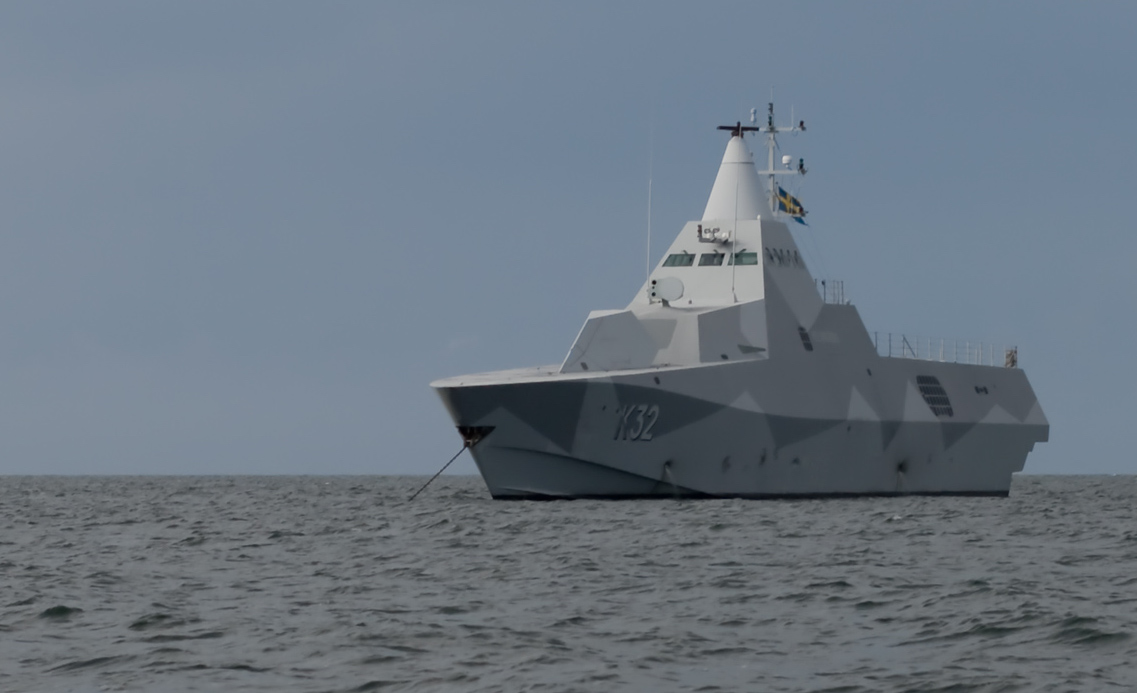
A panel of lawmakers heard a preview of the debate the Navy will soon face, regarding whether its future fleet will be made up of today’s staples – the aircraft carrier, surface combatants and nuclear-powered attack submarines – or whether those proven systems could be swapped for new platforms.
The House Armed Services seapower and projection forces subcommittee hosted representatives of three Future Fleet Architecture studies – conducted by the Navy, the Center for Strategic and Budgetary Assessments, and the MITRE Corporation – in a hearing last week and heard snippets of the arguments that will have to take place in the coming years over the future of the Navy fleet.
One debate came over whether a mainstay of the fleet – the nuclear-powered attack submarine – should continue to be the sole manned undersea platform for fighting a high-end conventional war. MITRE argued in its report that the Navy should invest in diesel submarines to supplement the Virginia-class boats, creating a more affordable high-low mix.

“Our concern was on the capacity side and actually bringing up the number of attack submarines,” Sunoy Banerjee, manager for MITRE’s Naval Research Development Test & Evaluation portfolio, said at the hearing.
“The diesels are going to have issues with speed of advance and magazine depth, they don’t have the magazine depth as they have in the Virginia [class]. But our thought was, base them forward – base them in Guam and Japan or in the Baltics – so they are close to the fight. And when the balloon goes up, flush them out early because it’s going to take them a while to get there. And the Virginias and the nuclear subs that are deploying from [the continental United States] or from other locations can speed into the [area of responsibility] and get on station very quickly. Once they’re on station, [diesel submarines are] something the adversary is going to have to worry about, so the thought there was this is a way of actually increasing the size of the submarine force relatively cheaply – because our back-of-the-envelope math suggests you can get three diesels for the cost of one Virginia – so as a way of increasing quickly to try to overcome the loss of the Los Angeles class as they retire out of the force.”

A Navy representative – speaking on behalf of the Navy FFA study group, and not the Navy requirements community – however, firmly denounced that idea.
“We don’t have the luxury of fighting close to our shore. We play an away game,” Charles Werchado, the deputy director of the Navy’s assessments division (OPNAV N81) said.
“If I was a country like China, I would buy a lot of diesels because I know you’re going to come and fight me here at home. We have to deploy, and the only way to deploy is to bring your own fuel with you. When we buy a Virginia, it comes with a lifetime of fuel. So I have nothing against diesel submarines, but you have to say, am I’m going to be fighting within 200 miles of where I’m based at? Or else now I have to buy extra oilers. I’m going to make them vulnerable when I refuel them; they’re going to have to snorkel and they’ll become vulnerable. It’s just not an option for us as long as we have to be a global navy.”
A second disagreement came over whether to turn over a new leaf on the Navy’s small surface combatant – the Littoral Combat Ship and the LCS-based frigate design – or choose a path forward that protects the industrial base here in the United States. MITRE’s study recommended stopping the LCS and frigate program immediately and starting over with a new design, likely borrowed from a foreign shipbuilder for the sake of expediency. Banerjee said the Garcia-class frigates in the U.S. Navy fleet in the 1980s were similar to what MITRE thought the Navy should build going forward, but a naval architect on the MITRE study team didn’t think building that same ship would be feasible today. Instead the team looked at foreign options such as the German F125-class frigate, with two 5-inch deck guns that could fire the Hyper Velocity Projectile, Vertical Launching System cells and electronic warfare and decoy capabilities. He, like the other project teams, also said the frigate would have to have air defense capabilities that allowed it to escort other military and civilian ships, as well as strong anti-submarine warfare capabilities.
However, Rep. Mike Gallagher (R-Wisc.), whose district includes the Marinette Marine shipyard that builds the Freedom-variant LCSs, questioned whether MITRE had considered the industrial base when crafting this proposal.
“Have you done any analysis of what that would do to the defense industrial base, because as I’m sure you know this isn’t sort of a turn it off, turn the spigot back on somewhere else,” the freshman congressman and Marine Corps veteran said.
“This is years of developing skilled workforce and improvements and efficiencies that happen every single day to make it more affordable.”
Banerjee replied that “the question, in terms of whether or not that could be built in those shipyards or whether those yards could be expanded to handle a larger ship size, that wasn’t something we looked at. What we did think about was whether it would be possible to actually potentially license a design to try to actually get something built sooner, if it’s a design that could be licensed and then manufactured at either or both of the existing LCS shipyards. Now what modifications they would have to do at the yards to be able to do that, we didn’t actually look at that.”
Bryan Clark, a senior fellow at CSBA, said during the hearing that the Navy ought to move to a larger and more survivable frigate design, ideally building the LCS and LCS-based frigate for a few more years until a new design is ready for production.
Clark said CSBA’s studies highlighted the need “to do air defense for another ship so it can do an escort mission, which we saw in our analysis as being increasingly important for a situation in which our logistics force and civilian convoys and noncombatant ships are going to be at risk of being attacked by an enemy that’s willing to go all out and attack civilians as well as attacking just strictly military ships. So we saw that need to have the ability to do air defense of another ship as being essential. The other thing it has to be able to do is anti-submarine warfare, and in particular using new anti-submarine warfare concepts that leverage things such as the variable depth sonar, which the LCS mission package has, and the multi-function towed array, which the LCS mission package has as well. What those capabilities do is allow us to transition from having a strictly man-on-man or single-ship-on-submarine kind of ASW to now a multi-static ASW where multiple ships can look for multiple submarines, and then you need standoff weapons to be able to engage those submarines rapidly.”

Clark didn’t explicitly address the industrial base factor, though he noted that the LCS can already carry out the anti-submarine warfare mission he requires but does not have the VLS cells for air defense. Freedom-variant prime contractor Lockheed Martin has said for a couple years that it could scale its LCS design up or down as desired for foreign military sales or for follow-on frigate designs – such as the longer hull with 16 VLS cells designed for the Saudi navy. In addition to an air defense frigate, the CSBA report also called for a smaller air defense ship class. They used the Swedish Visby-class corvette as an example of what the Navy might pursue.
Finally, there was some debate over how today’s aircraft carrier would fit into operational concepts for tomorrow’s high-end fight.
Werchado suggested that the carrier would be best leveraged when combined with a Wasp-class or America-class amphibious assault ship with fifth-generation F-35Bs onboard. He noted the Marines are using their Joint Strike Fighters now, while the Navy is still several years away from initial operational capability with its F-35C variant. If a big-deck amphib came to the fight with an all-F-35 loadout of 20 or more, and teamed up with an aircraft carrier with the EA-18G Growler for electronic attack and the E-2D Advanced Hawkeye airborne early warning aircraft, “now the carrier air wing has fifth-gen squadrons earlier, and the L-class ship affords the protection from the E-2s and the Growlers on the carrier.”
Beyond that, he said, the pairing would create twice as many nodes in the distributed lethality construct as carriers operating alone. The Navy sends carriers to war in pairs, to create 24-hour flight operations between the two ships. That means the Navy only has carriers in half as many places. With the support of F-35Bs on a big-deck, Werchado said, the Navy would essentially double how many places from which it could launch aircraft at sea.
Clark, however, saw a different future for carriers in high-end combat. He said putting carriers in the immediate conflict area suppressed their warfighting capabilities in CSBA studies because the crews spent their time driving around avoiding enemy missiles instead of launching airplanes for offensive operations. Instead, he said, a future high-end fight would not involve the carriers for the first day or two. Distributed surface and subsurface forces would fire a high volume of missiles very quickly for the first two days until they ran out of ammunition, and when those ships had to retreat from the fight to resupply, the aircraft carrier would come in and continue the fight against a presumably weakened enemy.





